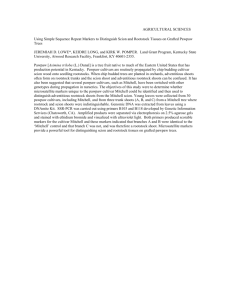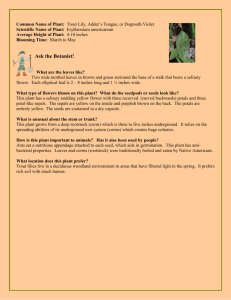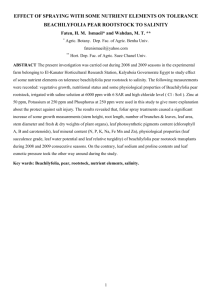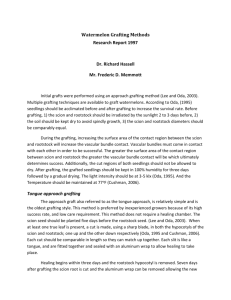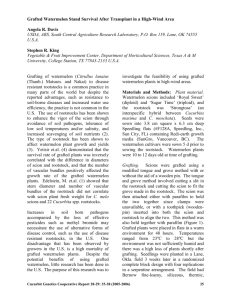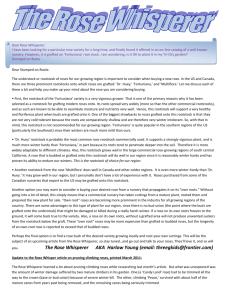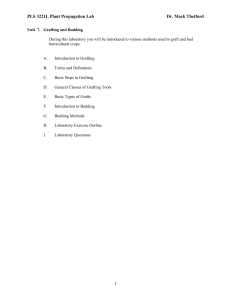Rootstock on arrival is potted up to keep it moist and in good
advertisement
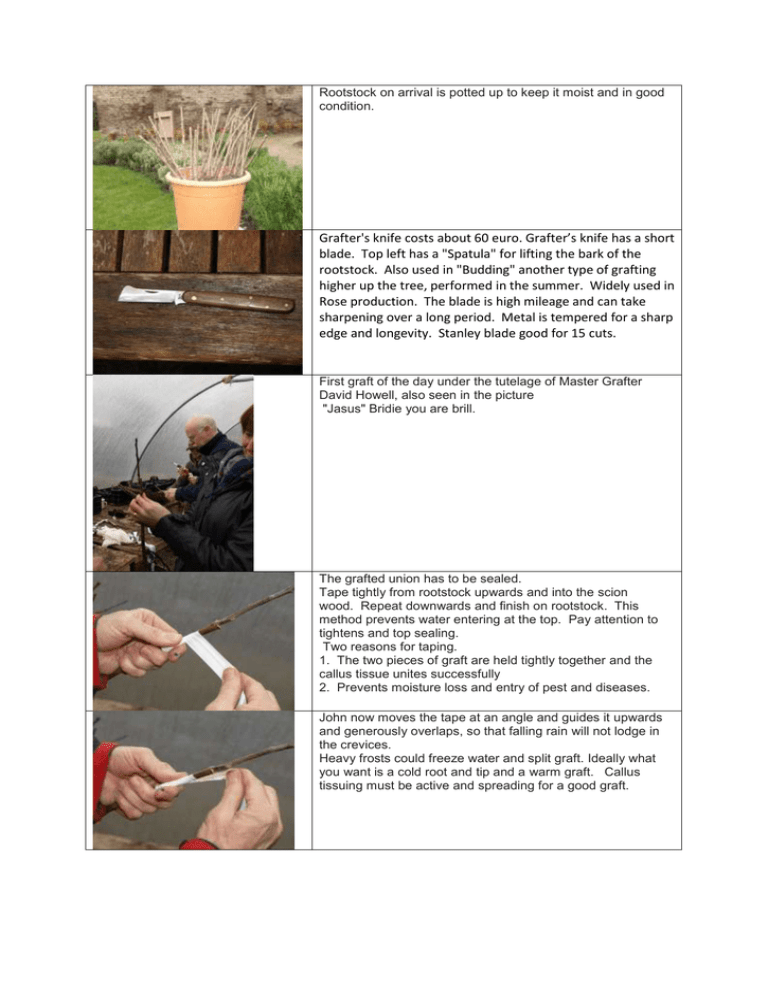
Rootstock on arrival is potted up to keep it moist and in good condition. Grafter's knife costs about 60 euro. Grafter’s knife has a short blade. Top left has a "Spatula" for lifting the bark of the rootstock. Also used in "Budding" another type of grafting higher up the tree, performed in the summer. Widely used in Rose production. The blade is high mileage and can take sharpening over a long period. Metal is tempered for a sharp edge and longevity. Stanley blade good for 15 cuts. First graft of the day under the tutelage of Master Grafter David Howell, also seen in the picture "Jasus" Bridie you are brill. The grafted union has to be sealed. Tape tightly from rootstock upwards and into the scion wood. Repeat downwards and finish on rootstock. This method prevents water entering at the top. Pay attention to tightens and top sealing. Two reasons for taping. 1. The two pieces of graft are held tightly together and the callus tissue unites successfully 2. Prevents moisture loss and entry of pest and diseases. John now moves the tape at an angle and guides it upwards and generously overlaps, so that falling rain will not lodge in the crevices. Heavy frosts could freeze water and split graft. Ideally what you want is a cold root and tip and a warm graft. Callus tissuing must be active and spreading for a good graft. Rootstock in their birthday suit. Note the two on the left, no roots at the bottom. Roots start up the maiden tree and outwards. To increase rootstock the "Stooling" method is used also called "Mound Layering". Several stems grow outward from one rootstock. When they root they are severed from the main rootstock. Widely used by commercial orchardists and nurserymen. The crown of the plant is capable of many stems when earthed up. Front tray fully grafted and labelled rootstock on M116 Foreground tray is M9 rootstock. M means Malling. The English national collection is in Kent and the research station is based nearby at East Malling. As it happens the botanical name for apple is Malus. There is no connection. Ireland does not produce rootstock; most other countries have their own rootstock. Russian rootstock can tolerate minus 40 degrees. We mainly purchase our rootstock from English Dutch and French nurseries. Planted into Nursery bed where they will remain for a year. Selecting Scion wood and Rootstock. Try and have the diameter the same size. Preparing Scion wood using the modified Cleft Graft Slice both sides equally and bring to a point Open rootstock one inch. Leave knife in place as it facilitates entry of scion wood. When scion wood is in place remove knife and push scion wood fully into the opening. Make sure it fits flush with the rootstock. Cambium layers of both must unite Preparing opening in rootstock to receive Scion wood using the modified Cleft Graft method Leave knife in wood until all scions wood has fully connected into the joint A finished Cleft joint. The barks of both should be tight and flush Preparing Scion and rootstock using the Whip and Tongue Graft. Slide both evenly so that they bed on top of each other and the barks of both are in line Preparing the whip to receive the tongue.
